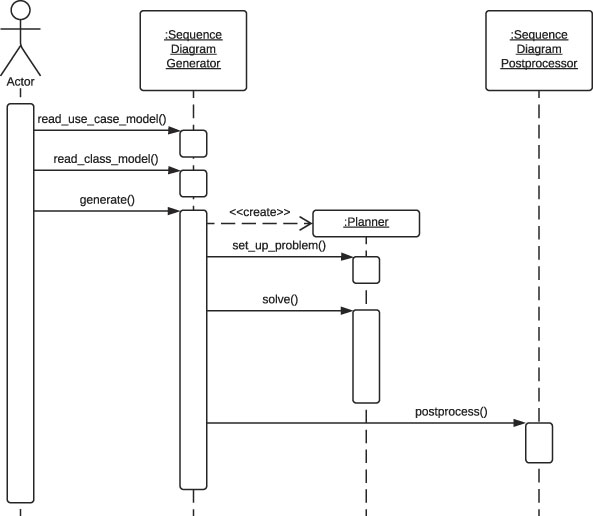

Instead of cluttering your sequence diagram with several objects and groups of messages that will confuse the reader, draw a few smaller sequence diagrams that aptly explain what your system does. Draw smaller sequence diagrams that capture the essence of the use case.To specify the reference fragment, you have to mention ‘ref’ in the name box of the frame and the name of the sequence diagram that is being referred to inside the frame.įor more sequence fragments refer to Beyond the Basics of Sequence Diagrams: Part 1, Part 2 and Part 3. It allows you to reuse part of one sequence diagram in another, or in other words, you can reference part of a diagram in another diagram using the ref fragment. You can use the ref fragment to manage the size of large sequence diagrams. (Find an example of a loop fragment below in the sequence diagram templates and example section) Reference Fragment If it is a minimum iterations guard, the loop must execute not less than the number mentioned, and if it is a maximum iterations guard, the loop mustn’t execute more than the number indicated. These are minimum iterations (written as minint = and maximum iterations (written as maxint = ). In addition to the Boolean test, the guard in a loop fragment can have two other special conditions tested against.

Place the words ‘loop’ in the name box and the guard condition near the top left corner of the frame. Loop fragment is used to represent a repetitive sequence. (Find an example sequence diagram with an option fragment in the Sequence Diagram Templates and Examples section). Option’s guard is placed at the top left corner. Unlike the alternative fragment, an option fragment is not divided into two or more operands. Similar to the alternative fragment, the option fragment is also represented with a rectangular frame where ‘opt’ is placed inside the name box. The option combination fragment is used to indicate a sequence that will only occur under a certain condition, otherwise, the sequence won’t occur. Each operand has a guard to test against and it is placed at the top left corner of the operand. To show two or more alternatives, the larger rectangle is then divided into what is called interaction operands using a dashed line, as shown in the sequence diagram example above. The alternative fragment is represented by a large rectangle or a frame it is specified by mentioning ‘alt’ inside the frame’s name box (a.k.a. The alternative combination fragment is used when a choice needs to be made between two or more message sequences. This – the fragment operator – specifies what sort of a fragment it is. On the top left corner of the fragment sits an operator. It is used to show complex interactions such as alternative flows and loops in a more structured way. Manage complex interactions with sequence fragmentsĪ sequence fragment is represented as a box that frames a section of interactions between objects (as shown in the examples below) in a sequence diagram.Note: View Sequence Diagram Best Practices to learn about sequence fragments. A Quick Overview of the Various Parts of a Sequence Diagram Lifeline Notation Each object has a column and the messages exchanged between them are represented by arrows. Sequence Diagram NotationsĪ sequence diagram is structured in such a way that it represents a timeline that begins at the top and descends gradually to mark the sequence of interactions. Shows different parts of a system work in a ‘sequence’ to get something done. In simpler words, a sequence diagram shows how different parts of a system work in a ‘sequence’ to get something done. They illustrate how the different parts of a system interact with each other to carry out a function, and the order in which the interactions occur when a particular use case is executed. Sequence diagrams, commonly used by developers, model the interactions between objects in a single use case. Sequence Diagram SlideShare Presentation.Sequence Diagram Templates and Examples.In this sequence diagram tutorial you will learn about Among the three, sequence diagrams are preferred by both developers and readers alike for their simplicity. These diagrams are used to illustrate interactions between parts within a system. There are 3 types of Interaction diagrams Sequence diagrams, communication diagrams, and timing diagrams.
#Sequence diagram generator how to
This sequence diagram tutorial is to help you understand sequence diagrams better to explain everything you need to know, from how to draw a sequence diagram to the common mistakes you should avoid when drawing one.


 0 kommentar(er)
0 kommentar(er)
